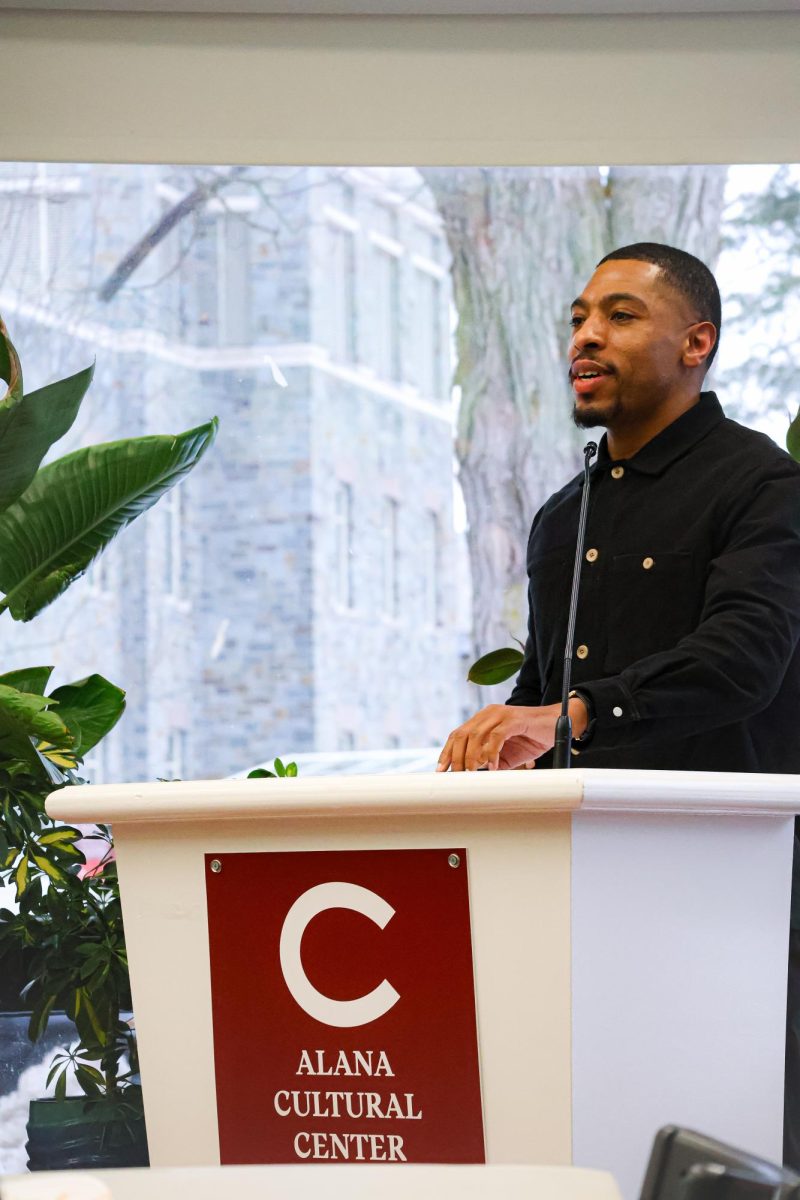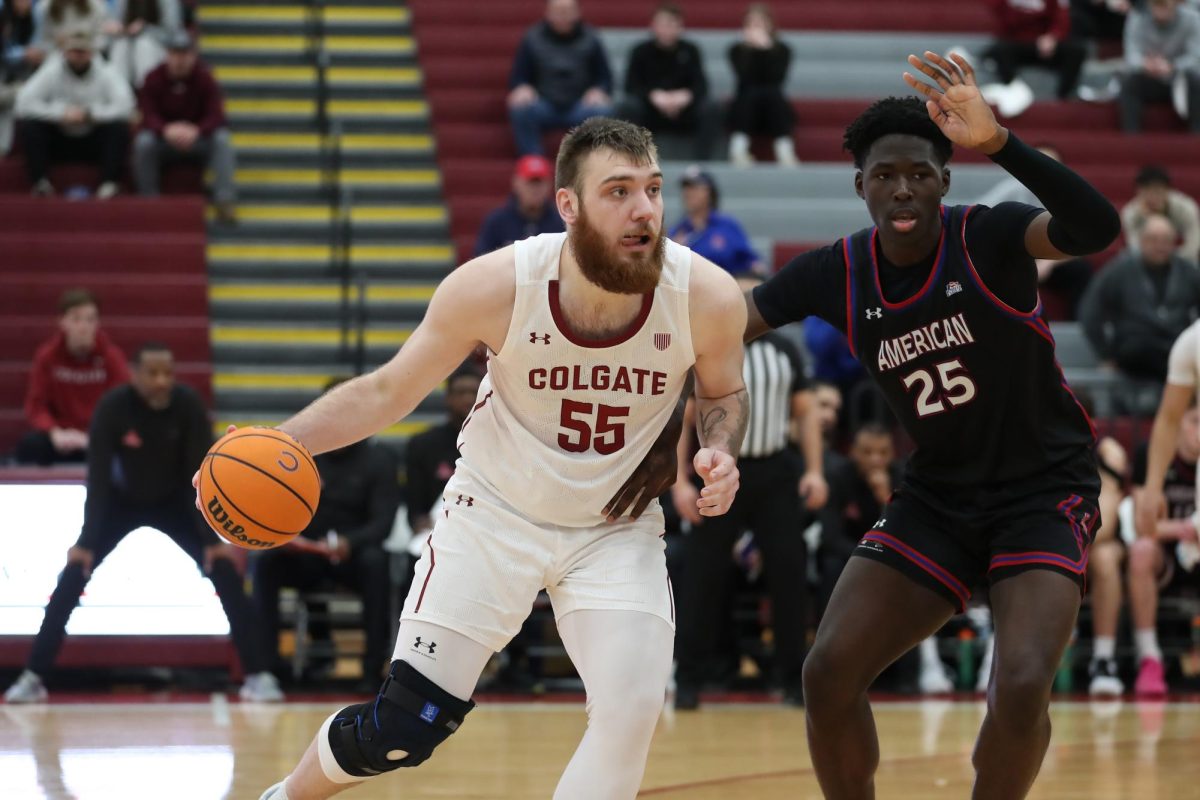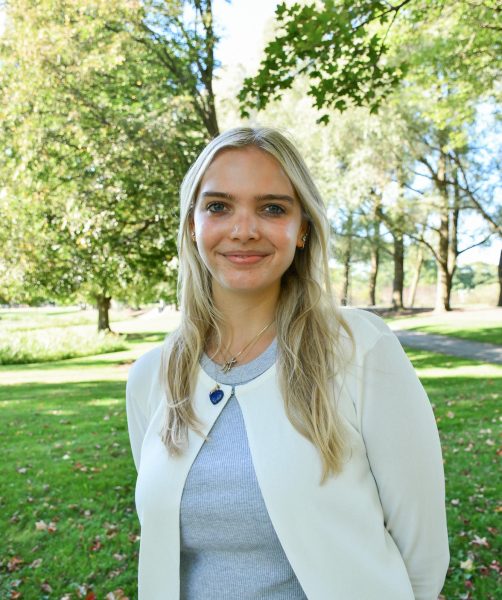The Middle Eastern and Islamic Studies (MIST) department held the final events of its speaker series on Israel and Palestine over the week of April 1. Throughout the academic year, there have been a series of seminars, talks and conversations that sought to inform students about the ongoing war in Gaza. Tamir Sorek, author and professor of Middle East history at Pennsylvania State University, presented “Demography, Statistics, and Power in Palestine/Israel” on Tuesday, April 2. Sorek’s talk was co-sponsored by the departments of sociology and anthropology. Michelle Campos, professor of Jewish studies and history at Pennsylvania State University, was the last speaker of this seminar series on Wednesday, April 3.
Sorek’s lecture began with him asking seemingly simple questions, including how many people there are in Israel and Palestine and asking to which source one could turn to find answers. Sorek went on to explain that the answers are not so simple, as it is difficult to define which land area differentiates the two states.
“Do you think it will be enough to go and look at the numbers?” Sorek asked. “It might not be so easy. Because one thing you have to do before you start is to ask where is Palestine and where is Israel. What is the territory that counts as Palestine [and] which territories count as Israel?”
As Sorek explained, Palestinians and Israelis see their states as occupying the same territory, complicating the issue of demography.
“When we think about what people consider as Palestine and Israel, they talk about the exact same country,” Sorek said.
Sorek first approached the problem of demography with historical context.
“Historically, the entire conflict is about demography,” Sorek said. “The Zionist movement emerged in Europe with a goal to bring Jews to Palestine and establish a politically independent community there. But without numbers, without bringing certain numbers that [would] at least be high enough to compare to the local population, it could not have happened.”
Though the Israeli Bureau of Statistics publishes population information, Sorek explained that there are politically-motivated exclusions in these reports. There is a shrinking Israeli majority, which is invisible in the published Israeli statistics. Sorek points out that is a factor in the 2023 Israel-Hamas war.
“What we see today in the Gaza Strip cannot be disconnected from this growing understanding of certain elements in the Israeli polity that the Jewish majority is disappearing and, therefore, there is a need for drastic action to [expel Palestinians],” Sorek said.
Sorek emphasized the central position of demography in the conflict.
“From the beginning, the Zionist project — and, as a result, the Israeli-Palestinian conflict — is about demography,” Sorek said. “It’s about counting heads, counting people. Therefore, the issue of how many people are in the country is always a political issue and a very central issue.”
Junior Diya Mehta attended the lecture and appreciated the historical context given.
“I really enjoyed that he brought in context from before Oct. 7, because I think a lot of talks that I’ve been to so far focused so heavily on what happened on Oct. 7, but it didn’t start on Oct. 7 — it started years before that,” Mehta said.
Another attendee, first-year Sarah Abbud, said she enjoyed the talk and felt it introduced her to the significance of population statistics in the conflict.
“I think he provided a safe environment for people to discuss and ask hard questions,” Abbud said. “Something I didn’t really understand and now know is that the demographics involved are a main contribution and main part of the war, and he emphasized that it’s really important to understand the different amount of people located in different regions and spaces.”
Mehta found that the talk was unique in that Sorek was specific and direct in talking about the conflict.
“I think a lot of the other talks that we’ve had so far have been dancing around the topic, and they haven’t really gotten down to what’s happening and the numbers that are involved,” Mehta said. “I think a lot of them are very focused on the abstract ideas of ‘how do we talk about this, how do we teach about this,’ but I think a lot of people aren’t even saying what ‘this’ even is. So I really appreciated that, while providing context, he also gave more information on the fact that what’s happening right now is a textbook definition of a genocide, and this is the first time I’ve heard any talk even use that word.”
Outside of the academic exploration of the issue, Mehta appreciated that the talk still treated the conflict as an urgent emergency.
“As someone who follows this very closely and [is] part of a student group that’s actively working to advocate for Palestine, I think it’s very important to have more talks like this where you get both sides of it and still understand that this is a humanitarian crisis at the end of the day,” Mehta said.
Campos’ lecture was titled “Whose Jerusalem? Belonging and Unbelonging in the Holy City” and detailed the history of Jerusalem and its contentious status. Campos described her work as being grounded in three subfields: the history of Palestine and Israel, the history of the late Ottoman Empire and the making of the modern Middle East and Sephardic Jewish studies. Her talk touched upon all of these points but focused mainly on Jerusalem during the late Ottoman period.
For Campos, one of the most defining aspects of Jerusalem in the late Ottoman period was accessibility.
“You had a city where people encountered others who were very different from themselves on a regular everyday basis, and that contributed to the sense of ‘we’re all here and in this together as citizens of the city; the city belongs to all of us,’” Campos said. “The integration of the neighborhoods at this time was a reflection of the possibilities of [Jerusalem] being a shared city.”
Campos said the current struggles in Jerusalem are a product of history.
“The city as it looks today is a product of wars, it’s a product of political decision-making, it’s a product of individual choices, right? So people also voted with their feet of where to live or who to live next to,” Campos said. “There is no reason why the city had to look the way it looks today. This does not prophesize what the city will look like […] 50 years from now, and it does not mean that in 100 years [peaceful coexistence] may not happen again.”
Kali Steinberg, a curatorial assistant at the Picker Art Gallery, enjoyed the specificity that the MIST series as a whole allowed.
“I thought, especially within this whole series MIST has been doing, it’s been great to zoom in on a particular aspect of the Palestinian-Israeli conflict and also zoom in on a very specific location that has been significant for thousands of years beyond the conflict,” Steinberg said.
Many students enjoyed the open conversation following Campos’ talk, including Mehta.
“I really enjoyed the talk. I think the idea of having a dialogue and asking the audience questions is very important, and I think more talks need to integrate [dialogue] because I think it’s something that brings someone to their own conclusions rather than being told [that] this is what it is,” Mehta said.
The MIST lecture series provided students with a range of perspectives to develop their understanding of past and current events in the Middle East region.















